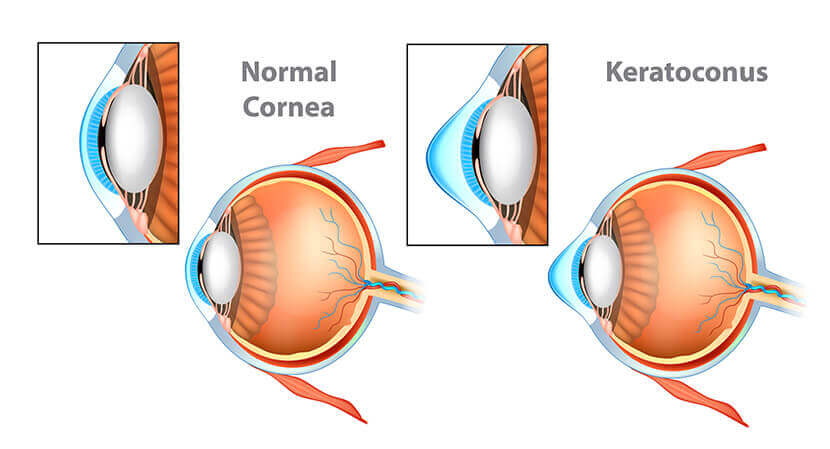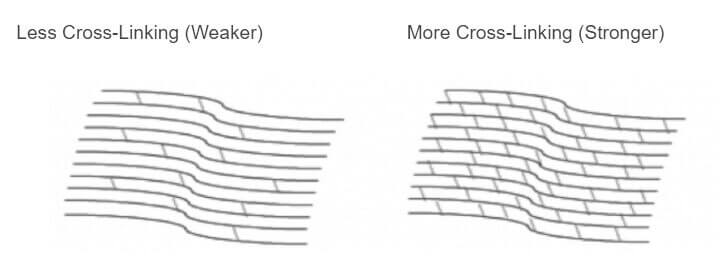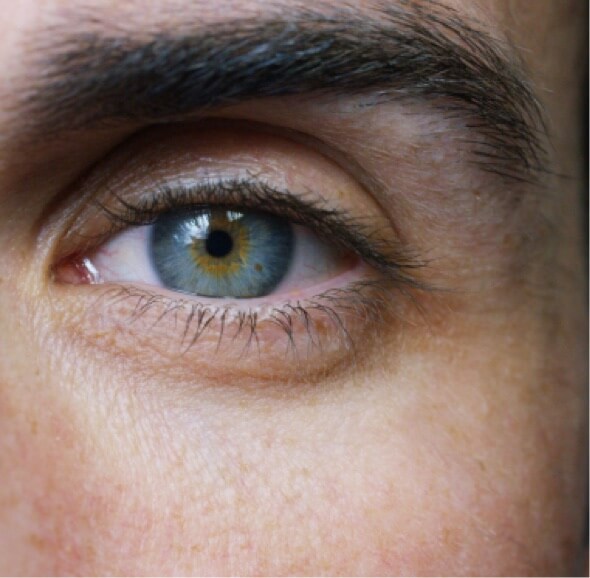Keratoconus
We Are the Crosslinking Experts
Residents of northern New Jersey and New York City and the surrounding areas have access to the Eye Care Associates of New Jersey. We are experts in corneal surgery and are located in Glen Rock, New Jersey.
At Eye Care Associates of New Jersey, both Dr. Friend and Dr. Merchant perform corneal cross-linking to treat keratoconus and corneal ectasia.
The doctors at Eye Care Associates of New Jersey are board-certified ophthalmologists and ophthalmic surgeons. We have extensive experience performing corneal cross-linking.
The Eye Care Associates of New Jersey have an excellent track record of treating keratoconus patients. Contact us today to schedule an appointment!
What is Keratoconus?
Keratoconus is a disorder of the eye where the cornea gets thin and weaker over time. The cornea is the front surface of the eye.
As the condition progresses, it gradually makes your cornea bulge into a cone shape. This distortion causes a person’s vision to blur and distort and generally makes it harder to see. In its advanced stages, people with keratoconus need corneal transplants.

How Do You Get Keratoconus?
It’s not clear what causes keratoconus, which can affect both eyes. There are certain risk factors that can make you more likely to develop keratoconus. These include:
- Having a family history of the disease
- Having certain medical conditions
- Environmental and genetic factors can influence whether you develop keratoconus
Some studies link allergies, hay fever, and excessive eye rubbing to keratoconus. Other studies show a genetic link if there is a family history of the condition.
Some people can experience symptoms as young as childhood that continue into adulthood. Those symptoms usually progress, making it harder to see.
What Are the Symptoms of Keratoconus?
A person who has keratoconus may experience blurred, double, or distorted vision. You may notice the need for new prescription eyeglasses more often.
You may also have an increased sensitivity to bright light and glare, or a clouding of your vision. It can become more difficult to see at night.
In some cases, people report seeing “ghost” images. Some people also see several images when there’s only one.
This can happen if you’re looking at two contrasting images or dark object on a light background. As keratoconus progresses, the corneas of the affected eyes appear to bulge.
Is There any Treatment for Keratoconus?
Once you’re diagnosed with keratoconus, the first treatment is glasses or contact lenses. The condition may continue to worsen over time.
Once the disease gets to the advanced stage, a person may need a corneal transplant. Recently, doctors have been able to treat keratoconus with a new, minimally invasive procedure. This is called corneal cross-linking.
What is Corneal Cross-Linking?
Corneal cross-linking creates bonds between the collagen fibers in your eye. This strengthens the tissues that hold the cornea. Corneal crosslinking has been performed in other countries for over 10 years. The procedure is now FDA approved and has been done in the US since 2016.
It slows down the progression of keratoconus. Corneal cross-linking is also less invasive than a corneal transplant.
The cross-linking procedure is usually performed at your doctor’s office, you don’t need general anesthesia, meaning it has a quicker recovery time.
Doctors use both medicated eye drops and ultraviolet light. The combination of both helps make corneal tissues stronger.
This two-step procedure includes applying vitamin B2 to the surface of the eye. This is then followed by exposing the eye to a controlled amount of ultraviolet light.

How Does Corneal Cross-Linking Work?
Before the cross-linking procedure, the doctor will give you numbing eye drops. You’ll also be given medicine to help keep you calm during the procedure.
Once the drops have taken effect, the doctor will treat your eye with Vitamin B2 eye drops. Vitamin B2 eye drops help your cornea absorb light.
It takes about 30 minutes for the eye drops to soak into your cornea. After this, you’ll then lie back in your chair and look up into the ultraviolet light.
This is not painful because your eye will be numb from the drops. Once you have done that for the required amount of time, the procedure is over. The entire treatment for corneal cross-linking should take between 60-90 minutes.
This procedure works best for patients with a recent keratoconus diagnosis. It also works well for patients whose keratoconus isn’t advanced.
Corneal cross-linking prevents the progression of keratoconus, but it can’t reverse the damage that’s occurred.
What Are My Options for Corneal Cross-Linking?
Currently, the FDA has approved a type of corneal cross-linking called epithelium-off cross-linking. With epithelium-off cross-linking, the epithelium gets removed before the Vitamin B2 drops.
The epithelium is the thin outer layer of the cornea. By removing the epithelium, it allows for easier absorption into the corneal tissue.
Your doctor may decide to use corneal cross-linking along with another keratoconus treatment.
How Do I Prepare for Corneal Cross-Linking?
Your doctor might tell you to stop wearing contact lenses for two weeks before the procedure. You should have a ride home arranged for after the procedure, since you can’t drive that day.
Your doctor may ask you not to wear any perfume, cologne or eye make up on the day of the procedure. This is to make sure your eyes and the areas around them are clean of any particles.
If you have any other questions, ask your doctor!
What is the Recovery from Corneal Cross-Linking Like?
After the procedure, your doctor will protect the treated eye with a special contact lens. If your eyes feel dry or uncomfortable, your doctor may recommend using artificial tears as needed.
If you are in any pain, a pain reliever like ibuprofen can help with these symptoms as well. You should not rub your eyes afterwards.
Right after the procedure, your eyesight will be blurry. It will take time for your cornea to heal and during that time you may be sensitive to light.
It can take anywhere from 1-3 months for your eye to fully recover. Once you have fully recovered, you may need to get new glasses or contact lenses.
Unlike other treatments, such as a corneal transplant, corneal cross-linking is minimally invasive. It can even be performed as an out-patient procedure!
Ideally, corneal cross-linking should be performed before the cornea has become too distorted. This should be before the patient has experienced significant vision loss from keratoconus.









